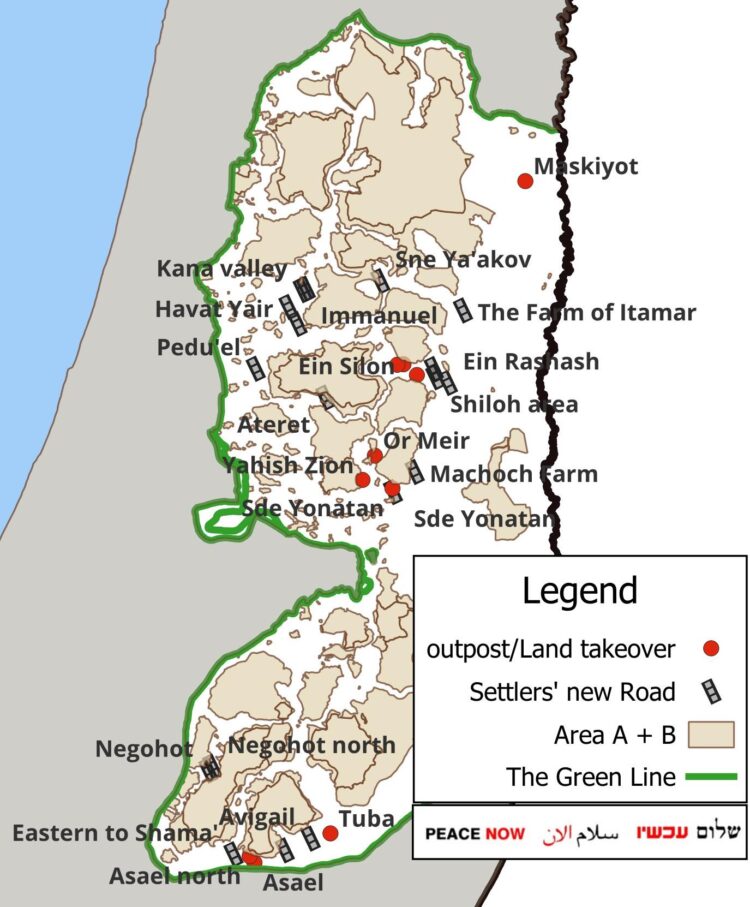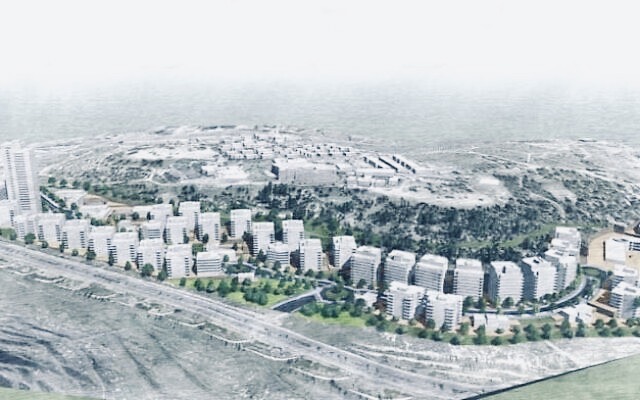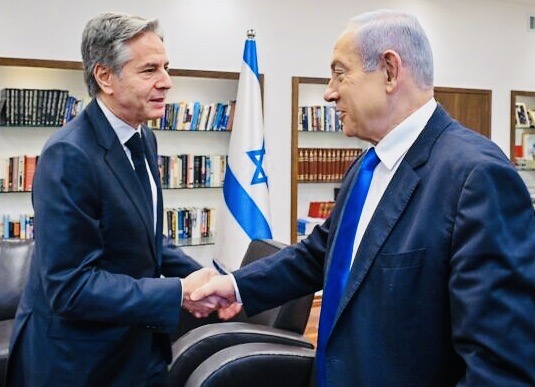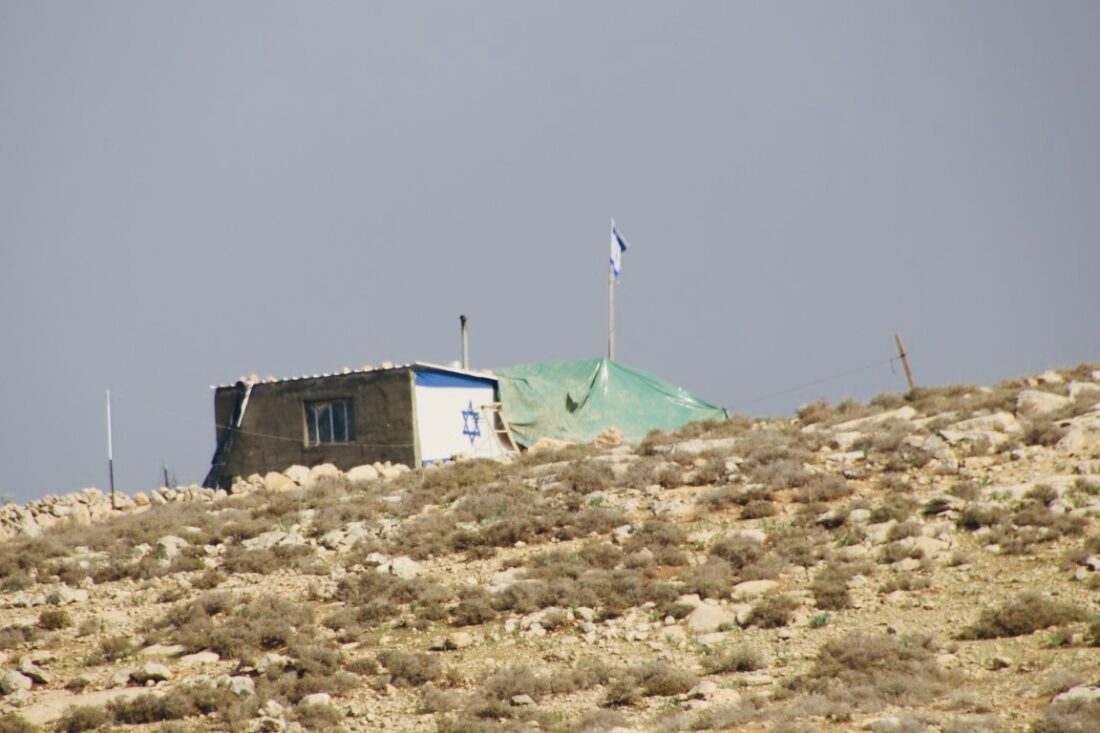Jewish settlers in the West Bank have been quietly establishing “facts on the ground” since Hamas terrorists invaded southern Israel on October 7 and murdered 1,200 people in an unprecedented rampage which triggered the fifth war in the Gaza Strip in 15 years.
Israel, meanwhile, has been conducting a counter-terrorism campaign in the West Bank during which nearly 300 Palestinians have been killed, mostly by the army in raids but also by settlers in a handful of random vigilante attacks.
At the same time, Israel has severely restricted Palestinian movement in the West Bank and revoked the work permits of thousands of Palestinians there until further notice.
The current unrest has raised fears that the West Bank, which Israel wrested from Jordan during the 1967 Six Day War, may be on the brink of a third Palestinian intifada, following the uprisings of 1987 and 2000.

Israel’s chief of staff, General Herzi Halevi, Defence Minister Yoav Gallant and the director of the Shin Bet security service, Ronen Bar, have reportedly warned Prime Minister Benjamin Netanyahu that the West Bank is boiling over with anger and resentment due, in part, to the restrictions that Israel has unilaterally imposed on the Palestinians of late.
With the tacit support of Netanyahu’s right-wing government, Jewish settlers in Area C of the West Bank have embarked on a series of building projects in the last three months.

According to Peace Now, which closely monitors their activities, they have created nine illegal outposts on privately-owned Palestinian lands, paved 18 private roads, and built fences, all in an effort to exert greater control over Area C of the West Bank.

Under the 1995 Oslo accord, the West Bank was divided into three separate but disconnected areas.
Area A, comprising 18 percent of its land mass and fully controlled by the Palestinian Authority, contains Palestinian towns such as Nablus and Ramallah. Area B, consisting of 22 percent of the West Bank, is jointly administered by Israel and the Palestinian Authority. Area C, comprising a little more than 60 percent of the West Bank and virtually every single Israeli settlement, is entirely under Israel’s jurisdiction.
In East Jerusalem, which Israel annexed in 1967, the Israeli government has undertaken a number of construction initiatives to ensure that this sector of the city can never be incorporated into the capital of a future Palestinian state. These projects, which are included in Israel’s campaign to retain the West Bank, have been accelerated since the outbreak of the latest Gaza war.

Under a plan approved this past November, 1,738 housing units will be built in Lower Aqueduct, a new neighborhood which will cut into the West Bank and block connections between East Jerusalem and Bethlehem.
Plans have been advanced to build Kidmat Zion, which is to be situated in Ras al-Amud, a predominately Arab neighborhood.
Israel is also planning to expropriate land in Silwan, a Palestinian district, so that pillars can be built for a cable car service to connect West Jerusalem and East Jerusalem.
These events have unfolded against the backdrop of calls by the United States for a two-state solution to resolve Israel’s conflict with the Palestinians.
During his most recent trip to Israel, U.S. Secretary of State Antony Blinken expressed criticism of Israel’s policies in the West Bank and East Jerusalem and yet again called for Palestinian statehood, which the current government staunchly opposes.
“Israel must be a partner to Palestinian leaders who are willing to lead their people in living side by side in peace with Israel as neighbors,” he said. “Israel must stop taking steps that undercut the Palestinians’ ability to govern themselves effectively. Extremist settler violence carried out with impunity, settlement expansion, demolitions, evictions, all make it harder not easier for Israel to achieve lasting peace and security.”

Although stressing that the Palestinian Authority has a responsibility to “reform itself and to improve its governance,” Blinken focused his remarks on Israel. As he put it yesterday after separarately meeting Netanyahu and Palestinian Authority President Mahmoud Abbas, “If Israel wants its Arab neighbors to make the tough decisions necessary to help ensure its lasting security, Israeli leaders will have to make hard decisions themselves.”
In his view, Palestinian statehood is critical to any movement forward toward peace once the war in Gaza ends.
Addressing the prospect of a rapprochement between Israel and Saudi Arabia, Blinken said that Israeli normalization with more Arab states “only comes from a regional approach that includes a pathway to a Palestinian state. You can’t have one without the other.”

This is absolutely true, but it remains to be seen how Blinken’s advocacy of Palestinian statehood can be reconciled with Netanyahu’s utter rejection of it.
Another factor that must be considered is the climate of intense mistrust between Israelis are Palestinians since October 7. Since then, Israelis have turned further to the right, a trend that began after the Six Day War. In light of that, the prospect of a two-state solution has rarely been dimmer.
The United States is acutely aware of this, but maintains that a political solution is sorely required, a thesis with which most Middle East experts would agree.
